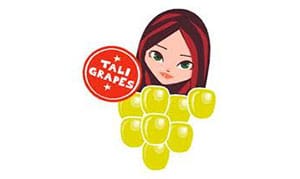The Importance of Fruit Quality Control: Enhancing Blueberry Testing
There are more than 50 types of blueberries in the world, five of which are grown in the US. The most common type is northern highbush but you can also find lowbush, southern highbush, rabbiteye, and half-high blueberries. Blueberries are related to cranberries, and these are actually the only two fruits commercially produced in North America. However, as time moves on, exporters from countries such as Mexico, Peru and Morocco are starting to gain traction in the blueberry market, and the competition is getting stiff for providing the best fruit quality control over the blueberry market.
For today’s stakeholders in the blueberry industry, what’s the smartest route to taking control over a sizable chunk of this superfood’s potential? It’s all about streamlining quality control, including reducing waste, ensuring consistency across the blueberry crops, and eliminating the costly price negotiations. Quality assumed from the field needs to match expectations from wholesalers, retailers, and end users.
For a soft fruit like blueberries, every stage of the supply chain matters, from harvesting conditions, handling and storage, to transport, packaging and temperature control.
Common Blueberry Defects
The following defects are the ones that are most likely to affect blueberry quality across the supply chain:
Insect Damage
Many insects can cause damage to a blueberry plant, including aphids, moths, midges, especially the blueberry gall midge, as well as the blueberry tip borer. These insects can burrow into fruit, lay eggs, or damage the flowers of the fruit.
Open Wounds
Did you know that blueberries have self-healing capabilities? Even if a blueberry has a wound, its own internal properties can help it to close up!
Decay/Rot
There are a few different kinds of blueberry rot that growers need to be aware of, each of which will impact blueberry harvest in a different way. For example, Anthracnose rot will cause an orange fungal ooze, while Botrytis fruit rot is less severe, especially if caught early. For packaged blueberries, it is most important to identify the occurrence of decay early and to prevent it from developing.
Green Fruits/ Overmature
Green berries is a common affliction that impacts the quality of blueberries. These need to be left on the bush during pre-harvest, and if missed, graded out during the packing and shipping process. On the other end of the scale, overmature fruits are softer and therefore more prone to crushing and bleeding. Light green leaves may also be a sign that the plant has deficiencies, for example, they may suggest a lack of nitrogen in the berries.
Scars
Sometimes, blueberries are damaged by the branches of the blueberry plant or by other external factors such as animals or handling. Wet stem scars are also common, and scarring in general can damage the skin of the fruit and allow access to insects or mold.
Presence of Pedicel/Pedicel Tear
Whether a blueberry has the pedicel attached or not can speak to the quality of the fruit itself and pulling the pedicel out can cause a skin tear that is often called a “pedicel tear” or “pulled stem”. Often, signs of problems with the berry can be spotted in the pedicel, for example gray spores that suggest mummy berry disease or tan spore masses as a result of flower strikes. Pedicels that remain can also cause scars, cracks and tears in the skin of other fruits along the process.
Bloom Vs Dirty/Dusty
Freshly hand-picked harvested berries normally have a white frosty looking film that can be easily removed and is known as “Bloom”. It is actually there to protect the fruit against insects or other bacteria. This bloom is a sign of freshness, but shouldn’t be confused with dust or dirt and shouldn't be designated as a defect. It’s best to wash blueberries right before eating them and not before, to keep them protected during storage.
Cracks/Split Berries
If berries are already approaching ripeness, or are fully ripe, and then the region experiences rainfall, this may cause cracked or split berries that have taken in too much moisture. The water can be taken in via the skin or at the root level.
Mold
When failing to manage the temperature/moisture of blueberries effectively, this can result in mold. Think warm, wet, or damaged blueberries. These will create an optimal condition for mold to form, and then spread quickly across a harvest. In cooler conditions, this mold is much less likely to form and spread, improving the yield.
Shriveling
Shriveled berries should not be confused with mummified berries. In the case of mummified berries, they have been affected by a fungus and the infected fruit turns pink or tan, shrivels, and drops prematurely. The infected fruit becomes a mummy and overwinters to infect the plants again in spring. Shriveling, on the other hand, generally affects a specific area of the blueberry. Frost injury can also cause a dark and shrunken look to the berries, and makes the blueberries hollow inside (when cut).
Crushed/Bleeding
As a soft fruit, blueberries need to be handled carefully, or damage can happen quickly. When fruit gets crushed or mishandled, bleeding can occur where the juices of the fruit are squeezed out, and this can dampen the rest of the crop, making it more likely that mold and decay will occur.
Interesting Facts about Blueberries
- AI PIA completed a study of more than 100,000 samples of fresh blueberries and found that only 1% of the harvest could be called ‘excellent’ in quality, and just 43% was considered ‘good.’
- In a list against more than 40 other fruits and vegetables, blueberries are ranked number one in antioxidant health benefits. Superfood!
- Blueberry harvest often coincides with the periods in the year that have the highest humidity rates and temperatures too. That makes it even more essential that stakeholders take steps to limit decay and mold.
- Did you know that blueberries are Canada’s most highly exported fruit? Canada is actually the third largest blueberry growing region in the world, behind the US, and Chile.
- Blueberries are really healthy and have been linked to lowered blood pressure, a reversal in dementia symptoms, increased insulin response for diabetics, and even a reduced risk of cancer. Eat up!
Common Attributes for Blueberry Quality Evaluation
The following internal and external blueberry attributes are commonly used for quality evaluation:
Color
Diameter
Degrees Brix
Acidity
Firmness
Bloom
For the full list of attributes that the Clarifruit platform currently evaluates and recommended quality standards for each, download our free app now.
The Clarifruit platform also integrates with 3rd-party technology to evaluate external tomato attributes. Learn more here.















